PARTNERS
 The participating partner is the Institute of Computer Science (ICS), which belongs to the Foundation for Research and Technology – Hellas (FORTH). In particular, researchers from three laboratories, CVRL, HCI, ISL of ICS will be cooperating in FORTH’s group.
The participating partner is the Institute of Computer Science (ICS), which belongs to the Foundation for Research and Technology – Hellas (FORTH). In particular, researchers from three laboratories, CVRL, HCI, ISL of ICS will be cooperating in FORTH’s group.
The Foundation for Research and Technology – Hellas (FORTH) established in 1983, is the largest and most prestigious research centre of Greece with well-organised facilities and highly qualified personnel. It consists of seven research institutes located throughout Greece. Over the years, FORTH has become one of the top European research centres. From a total of 38 ERC grants awarded since 2007 to scientists hosted at Greek institutions, 12 are located at FORTH. According to the fifth FP7 monitoring report, FORTH ranked 13 among all European research organisations in FP7 signed grant agreements in terms of counts of participations for the period 2007-2011.
The Institute of Computer Science (ICS) has a long tradition in conducting basic and applied research, developing applications and products, and playing a leading role in Greece and internationally. In its thirty-year history, FORTH-ICS has established itself as an internationally known and highly competitive research institute, with a modern infrastructure and a broad range of R&D and educational activities. ICS has a full‐time staff of over 200 people (among them, 60 hold a Ph.D. degree, 80 have a Master’s degree, and 60 are administrative and technical staff), about 10 visiting researchers, and over 120 graduate and undergraduate students. More than 70% of its funding comes from participation in competitive European R&D programs.
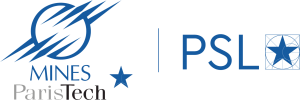 ARMINES is a private non-profit research and technological organisation (RTO) funded in 1967 having common research centers with the Ecoles des Mines: Paris (Mines ParisTech), Albi-Carmaux (Mines Albi-Carmaux), Alès (Mines Alès), Douai (Mines Douai), Nantes (Mines Nantes) and Saint-Etienne (Mines Saint-Etienne), gathering public and private personnel and means, to collaborate on an arms legnths basis and perform research contractual activities and academic research training. The Joint Research Units and the collaboration between ARMINES and the Ecole des Mines are organised within the frame of a convention signed with each Ecole des Mines in conformity with the Law dated April 18th, 2006, under the administrative authority of the French Minister of Industry; ARMINES having in addition, the duty to manage research contractual activities and the related intellectual property rights. ARMINES currently shares 48 Joint Research Units (Common Research Centres) with the Ecoles des Mines. the. ARMINES also collaborates with ENSTA ParisTech, Ecole Polytechnique, ENPC and Ecole Navale.With a total turnover of more than €44,72 million (2015), ARMINES is is amongst the top of private contract research institutions affiliated to higher education entities. ARMINES is also member of EARTO (European Association of RTOs), EIRMA (European Industrial Research Association Management) and of the Carnot Institute.
ARMINES is a private non-profit research and technological organisation (RTO) funded in 1967 having common research centers with the Ecoles des Mines: Paris (Mines ParisTech), Albi-Carmaux (Mines Albi-Carmaux), Alès (Mines Alès), Douai (Mines Douai), Nantes (Mines Nantes) and Saint-Etienne (Mines Saint-Etienne), gathering public and private personnel and means, to collaborate on an arms legnths basis and perform research contractual activities and academic research training. The Joint Research Units and the collaboration between ARMINES and the Ecole des Mines are organised within the frame of a convention signed with each Ecole des Mines in conformity with the Law dated April 18th, 2006, under the administrative authority of the French Minister of Industry; ARMINES having in addition, the duty to manage research contractual activities and the related intellectual property rights. ARMINES currently shares 48 Joint Research Units (Common Research Centres) with the Ecoles des Mines. the. ARMINES also collaborates with ENSTA ParisTech, Ecole Polytechnique, ENPC and Ecole Navale.With a total turnover of more than €44,72 million (2015), ARMINES is is amongst the top of private contract research institutions affiliated to higher education entities. ARMINES is also member of EARTO (European Association of RTOs), EIRMA (European Industrial Research Association Management) and of the Carnot Institute.
In terms of European activity, ARMINES through the Joint Research Units are involved in European projects since 1994 (FP4) and obtained, within FP7, 11 projects as coordinator and 87 as partner.
linked Third Parties (Article 14) :
Ecole Nationale Supérieure des Mines de Paris (Mines ParisTech)
Ecole Nationale Supérieure des Mines de Paris (MINES ParisTech – www.mines-paristech.eu), founded in 1783, is one of the oldest French higher education institution in engineering. The aim is for academic excellence with 286 research professors, 100 thesis and 400 articles or books in key research fields published every year. The School is a leader in many areas, among which five major fields: 1/ Earth sciences and the environment, 2/ Energy and process engineering, 3/ Mechanical engineering and materials, 4/ Mathematics and systems and, 5/ Economics, management and society. With 15 research centres, , joint research units with ARMINES extending over five different fields, MINES ParisTech is the leading school in France for its volume of contractual research. Its major research themes are essentially based on problems raised by industry, including MITAL, EDF, TOTAL, RENAULT, PSA, SAFRAN, SNECMA, GDF and SAINT-GOBAIN, as well as society as a whole. MINES ParisTech is also member of of the Carnot Institute and of Paris Sciences et Lettres Research University (PSL – www.univ-psl.fr).
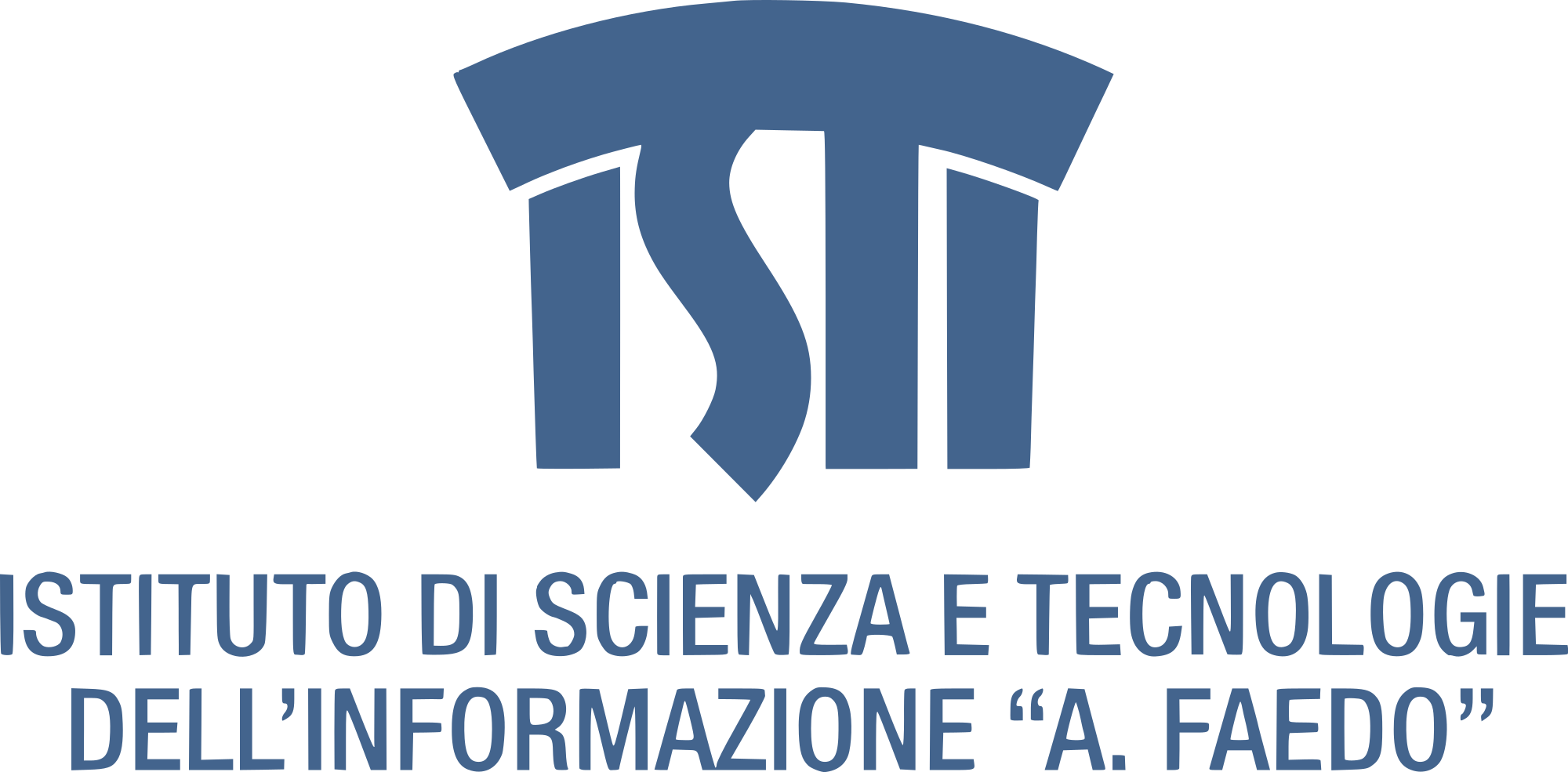 Consiglio Nazionale delle Ricerche is the largest public research institution in Italy, the only one under the Education, University and Research Ministry (MIUR) performing multidisciplinary activities. Its duty is to carry out, promote, spread, transfer and improve research activities in the main sectors of knowledge and applications for the scientific, technological, economic and social development of the country by ensuring a large and effective European and international cooperation in all fields.
Consiglio Nazionale delle Ricerche is the largest public research institution in Italy, the only one under the Education, University and Research Ministry (MIUR) performing multidisciplinary activities. Its duty is to carry out, promote, spread, transfer and improve research activities in the main sectors of knowledge and applications for the scientific, technological, economic and social development of the country by ensuring a large and effective European and international cooperation in all fields.
Institute of Information Science and Technologies
The Institute of Information Science and Technologies of the Italian National Research Council (ISTI-CNR), the largest Italian institute in ICT, is organized in 16 laboratories, committed to producing scientific excellence and playing an active role in technology transfer. The Digital Libraries group (led by Dr Carlo Meghini) participating to this proposal belongs to the “Networked Multimedia Information System” laboratory (NeMIS), which consists of around 60 researchers and technicians conducting research and development activities on the definition of algorithms, techniques, models and methods addressing aspects such as acquisition, integration, storage, analysis, indexing, provision, and presentation of digital information across different scientific and industrial application domains. The members of Digital Library group have been involved in many EC funded projects in digital libraries and digital preservation. Currently, they are involved in the H2020 Programme with the following projects: ARIADNEplus – Advanced Research Infrastructure for Archaeological Data Networking in Europe, E-RIHS PP – European Research Infrastructure for Heritage Science, PARTHENOS – Pooling Activities, Resources and Tools for Heritage E-Research Networking, Optimization and Synergies. Within the Mingei project the ISTI-CNR is the leader of WP3 – EXAMINE: Analyse & model HC representations that aims at creating the knowledge representation model for Heritage Crafts and formal narratives, as well as a platform for semantic annotation and narrative creation and visualisation.
 MIRALab S.à.r.l. is a Geneva-based R&D company specialised in the scientific areas of Computer Graphics, Virtual Reality, Computer Vision, Affective Computing and Artificial Intelligence and developing technologies such as Interactive Virtual Humans, Virtual Fashion Simulation, Virtual Cultural Heritage, Medical Simulation, Virtual Hair Simulation, Emotion and Personality Simulation and Intelligent Social Robots. MIRALab S.à.r.l. was founded by Proffesor Nadia Magnenat-Thalmann and Proffesor Daniel Thalmann as a spin-off of the renowned research lab MIRALab from the University of Geneva which has been since its establishment in 1989 in the forefront of the mentioned scientific areas. As a spin-off of the research lab MIRALab, MIRALab S.à.r.l inherits the decades’ long experience in scientific research and the experience gained in more than 50 European projects and the many leading companies the research lab collaborated with. As a company, MIRALab S.à.r.l. is carrying on the scientific research and innovations of the research lab and explores new ways to commercialize the applied research. MIRALab Sarl was a partner of the EU project fromROLLtoBAG and is currently a partner of the AAL project Active@Home
MIRALab S.à.r.l. is a Geneva-based R&D company specialised in the scientific areas of Computer Graphics, Virtual Reality, Computer Vision, Affective Computing and Artificial Intelligence and developing technologies such as Interactive Virtual Humans, Virtual Fashion Simulation, Virtual Cultural Heritage, Medical Simulation, Virtual Hair Simulation, Emotion and Personality Simulation and Intelligent Social Robots. MIRALab S.à.r.l. was founded by Proffesor Nadia Magnenat-Thalmann and Proffesor Daniel Thalmann as a spin-off of the renowned research lab MIRALab from the University of Geneva which has been since its establishment in 1989 in the forefront of the mentioned scientific areas. As a spin-off of the research lab MIRALab, MIRALab S.à.r.l inherits the decades’ long experience in scientific research and the experience gained in more than 50 European projects and the many leading companies the research lab collaborated with. As a company, MIRALab S.à.r.l. is carrying on the scientific research and innovations of the research lab and explores new ways to commercialize the applied research. MIRALab Sarl was a partner of the EU project fromROLLtoBAG and is currently a partner of the AAL project Active@Home
 Waag operates at the intersection of science, technology and the arts. Our work focuses on emergent technologies as instruments of social change, and is guided by the values of fairness, openness and inclusivity. Through new technologies Waag aims to make the crafts within Mingei accessible to a wide audience while preserving them. What are unique aspects of the craft that need to be preserved? Can technologies archive crafts in a future-proof way? What is the future perspective of the craft and can we involve new users in its application?
Waag operates at the intersection of science, technology and the arts. Our work focuses on emergent technologies as instruments of social change, and is guided by the values of fairness, openness and inclusivity. Through new technologies Waag aims to make the crafts within Mingei accessible to a wide audience while preserving them. What are unique aspects of the craft that need to be preserved? Can technologies archive crafts in a future-proof way? What is the future perspective of the craft and can we involve new users in its application?
Within Mingei Waag is the expert partner in the field of co-creation. During co-creation activities the local craftsmen and experts will be involved in capturing, digitising and unlocking the craft. For this purpose, Waag will make use of earlier developed co-creation tools. Additionally Waag is responsible for the communication and evaluation of Mingei.
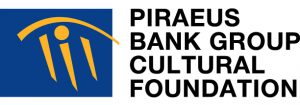 The Piraeus Bank Group Cultural Foundation (PIOP) is a non-profit foundation operating under private law. In accordance with its statutes, its operational costs, including those of its Museums, are covered by the Piraeus Bank Group. At the same time, PIOP pursues the co-financing of certain projects through national and European funding. The basic statutory goals of the Foundation are:
The Piraeus Bank Group Cultural Foundation (PIOP) is a non-profit foundation operating under private law. In accordance with its statutes, its operational costs, including those of its Museums, are covered by the Piraeus Bank Group. At the same time, PIOP pursues the co-financing of certain projects through national and European funding. The basic statutory goals of the Foundation are:
• to record and promote Greece’s cultural heritage and identity,
• to preserve the traditional, artisanal and industrial technology of our country,
• to link culture with the environment and sustainable development.
These goals are achieved through:
a) the creation and management of a Network of thematic Museums of technology in the Greek provinces, where the specific nature of production in the corresponding region is highlighted, focusing on the three fold “People-Environment-Culture” as well as turning Museums to active places of interaction with the public as well as to custodians of the cultural and natural values of the landscape,
b) the implementation of a research program on cultural landscapes in Natura 2000, in particular with respect to an integrated approach for the joint management of cultural and natural heritage,
c) the study of intangible cultural heritage,
d) the design and implementation of educational programs and activities,
e) the participation in the public dialogue for the definition of the strategies to be followed in the area of the preservation of cultural and natural heritage.
Dimension of the local community where the project takes place: The Thematic Museums of the Piraeus Bank Group Cultural Foundation welcome over a hundred thousand visitors each year and are staffed by members of the local society. Through its Museums, PIOP creates live cultural cells in the Greek provinces. For the creation and functioning of the Museums, PIOP collaborates effectively with the Hellenic Ministry of Culture, the local and regional self-government authorities, local society, as well as with a broad network of specialists on environmental and cultural issues.
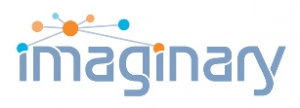 Milan based imaginary are one of the longest established and most respected European Serious Games companies (SME). Since its formation in 2004, imaginary has built an enviable reputation for its multi-disciplinary specialisation in the rapidly growing serious games and gamification market place. The key strengths of its multi-disciplinary team are creativity and innovation backed by solid technical competence and an understanding of the commercial potential of serious games and gamification in its 3 main chosen development areas – eHealth, Smart Cities and training where the transformational impact of these technologies and applications is now widely acknowledged. Competencies cover the design, typically carried out through participatory design methods with the target group, and development of enabling technologies and data visualisation, specifically simulation systems, Serious Games, gamified processes, virtual immersive environments and advanced interactive technologies supporting eHealth and Smart Society topics, motivation, behavioural change, patients’ empowerment and awareness building as well as training and learning.
Milan based imaginary are one of the longest established and most respected European Serious Games companies (SME). Since its formation in 2004, imaginary has built an enviable reputation for its multi-disciplinary specialisation in the rapidly growing serious games and gamification market place. The key strengths of its multi-disciplinary team are creativity and innovation backed by solid technical competence and an understanding of the commercial potential of serious games and gamification in its 3 main chosen development areas – eHealth, Smart Cities and training where the transformational impact of these technologies and applications is now widely acknowledged. Competencies cover the design, typically carried out through participatory design methods with the target group, and development of enabling technologies and data visualisation, specifically simulation systems, Serious Games, gamified processes, virtual immersive environments and advanced interactive technologies supporting eHealth and Smart Society topics, motivation, behavioural change, patients’ empowerment and awareness building as well as training and learning.
Imaginary has always been a pioneering and innovative company playing a key role in European Research: the company worked on more than 25 EU research projects as well as on many industrial commercial projects covering the whole process from user-centred design, to design and development of game-based and immersive solutions to evaluation phases.
Imaginary is continuously involved in the organization of several international events about their topics of expertise; many publications have already been produced and are regularly submitted to international conferences and magazines.
Apart from this, imaginary is very well linked to some Italian strategic groups: due to its expertise, it has been for several years in the board of the Regional Cluster “Technologies for Smart Communities” with responsibility of the Training group, partner of the Regional Cluster “Technologies for Living Environments” and partner of the strategic group Torino Smart City.
imaginary’s staff is multidisciplinary: we have about 20 staff, among those we have engineers and information scientists, mathematicians, psychologists, learning experts, graphic designers. Among our collaborators we have also the former founder of the Serious Games Institute at Coventry University.
 The Musée des Arts et Métiers results from the renovation of the collections spaces of the Conservatoire National des Arts et Métiers (CNAM) which was founded in 1794 by Abbé Grégoire as a “store of new and useful inventions”. It is the oldest heritage repository and exhibit space for historical science and technology artefacts in Paris and a symbol for innovation. The Musée des Arts et Métiers is part of the Conservatoire National des Arts et Métiers, a French “Grand établissement” with its identity rooted to the scientific, cultural and professional fields, under the supervision of the Ministry for Higher Education and Research. It contributes to distribute knowledge related to technological innovation and scientific advances to the greater public. The museum’s collections are testimonies of the history of science and technology since the Modern Era, with over 2400 inventions exhibited in the museum.
The Musée des Arts et Métiers results from the renovation of the collections spaces of the Conservatoire National des Arts et Métiers (CNAM) which was founded in 1794 by Abbé Grégoire as a “store of new and useful inventions”. It is the oldest heritage repository and exhibit space for historical science and technology artefacts in Paris and a symbol for innovation. The Musée des Arts et Métiers is part of the Conservatoire National des Arts et Métiers, a French “Grand établissement” with its identity rooted to the scientific, cultural and professional fields, under the supervision of the Ministry for Higher Education and Research. It contributes to distribute knowledge related to technological innovation and scientific advances to the greater public. The museum’s collections are testimonies of the history of science and technology since the Modern Era, with over 2400 inventions exhibited in the museum.
The museum is invested in cultural programs aiming to reach broad and various audiences of all ages through pedagogical visits, conferences and symposiums, temporary exhibits and thematic events. It has a public documentation centre for the broad public as well as for professionals with renowned resources in the field of the history of technologies and industrial heritage. The museum is part of the CNAM, which is a superior teaching and research establishment and is part of national and European actions, such as the national Mission PATSTEC for protecting scientific contemporary heritage.
The museum also collaborates with UMAC (international network of universities created by the International Council of Museum), ICOM, UNIVERSEUM, ARTEFACTS and ECSITE networks and scientific and technical committee for instruments. The museum had 300,000 visitors in 2013.
The museum will be in charge of establishing common classification methods and description of objects and knowledge with all project partners. CNAM will establish a joint working repository (prototype structured interface) on the public web site to test the propositions of each and work together. The repository will host the data contents of the ESTHER project and of course dialogue with other European databases already created (Inventing Europe, Europeana, PATSTEC, etc.). The museum will release a common paper guide summarizing these best practices in this area and distribute it to all European countries possessing scientific and technological contemporary collections.
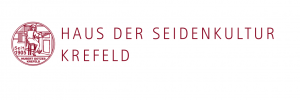 The Museum, Haus der Seidenkultur, in Krefeld, Germany is located in a building erected in 1868 as a residence combined with a weaving workshop for ecclesiastical textiles. Weaver Hubert Gotzes took over the business in 1908 and together with his three sons manufactured liturgical vestments including some for the neighbouring Church of St. Stephan. The residential quarters were situated at the front of the four-windowed house and the weaving workshop comprising 20 handlooms some with Jacquard fittings on the first floor was at the rear. In a building extension there were also looms to weave velvet. On the ground floor there was a reception area, a fitting room, the sewing and embroidery rooms. In 1992 the factory closed and the last owner who wanted to preserve it for future generations sold it to the Association of Friends Haus der Seidenkultur.
The Museum, Haus der Seidenkultur, in Krefeld, Germany is located in a building erected in 1868 as a residence combined with a weaving workshop for ecclesiastical textiles. Weaver Hubert Gotzes took over the business in 1908 and together with his three sons manufactured liturgical vestments including some for the neighbouring Church of St. Stephan. The residential quarters were situated at the front of the four-windowed house and the weaving workshop comprising 20 handlooms some with Jacquard fittings on the first floor was at the rear. In a building extension there were also looms to weave velvet. On the ground floor there was a reception area, a fitting room, the sewing and embroidery rooms. In 1992 the factory closed and the last owner who wanted to preserve it for future generations sold it to the Association of Friends Haus der Seidenkultur.
The museum was opened in 2000 and the weaving workshop became alive again. Former weavers demonstrate their skills on various different handlooms. Former craftsmen now also demonstrate the skills involved in the preliminary stages to create the splendid fabrics, for example the preparation of the warp beam, point paper design i.e. transferring a picture or pattern to graph paper (the forerunner to pixels), punching of the cards for the Jacquard units i.e. transferring the point paper design to the card sets which control the Jacquard unit (forerunner of the computer), picture embroidery.
Each year the museum organizes two temporary exhibitions on subjects relating to textiles – recently for example “Textile Culture of the Miaos, a minority group in China”, “Golden Spinning Wheel for Pierre Cardin”, “Antipendiums from the Protestant Church”. It organizes readings on the topic of textiles and regularly participates in various events organized by others, e.g. flax market, International Museum Day. The work is carried out largely by volunteers from the Association of Friends and financed by membership contributions and donations.
